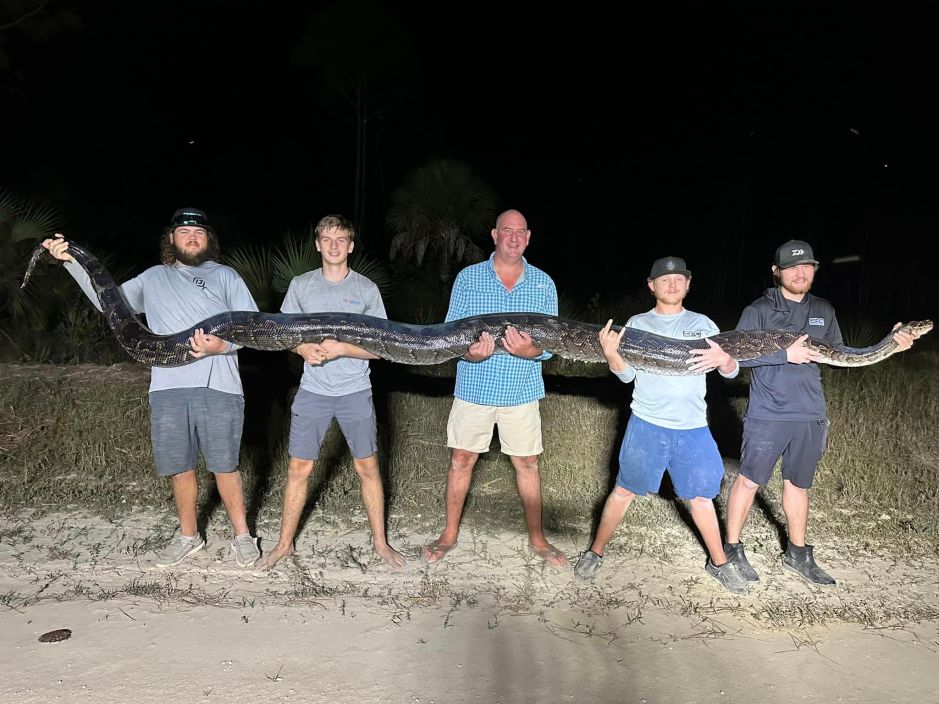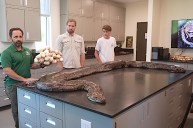Mike Elfenbein was out prowling the roads around Big Cypress National Preserve with his son Cole on the lookout for pythons in early November. They spotted a huge python stretched out across a road, nearly spanning it from side to side. At first they thought it was an alligator, but as they got closer, they realized it was a long, large, invasive Burmese python. It was the biggest snake either had ever seen.
Seventeen-year-old Cole Elfenbein quickly assisted, and the two men grabbed the snake's head while the others worked to subdue the length of its body. The five men struggled with the python for more than 45 minutes before gaining control. The strong python wriggled and lifted herself repeatedly while trying to wrap herself around the men to constrict her opponents, Mike Elfenbein told CBS News.
Once the hunters had gained control of the python, they called professional python hunter Amy Siewe to come to the field to dispatch it. Siewe is no stranger to big pythons—she has captured 530 since she became a python hunter in 2019—but this python was the fattest she had ever seen.
The female Burmese python measured 17 feet, 2 inches long and weighed 198 pounds, making it the second heaviest python captured to date in Florida, as confirmed by Conservancy of Southwest Florida research manager Ian Bartoszek.

Facebook, Mike Elfenbein
Burmese pythons have been wreaking havoc on Florida's Everglades for decades. After the first confirmed python was discovered in Florida in 1979, and the Burmese python population has skyrocketed in the state since then. Established population estimates are now at more than 100,000, according to researchers.
Pythons have disrupted the Everglades' native ecosystem by wiping out nearly all of the small mammal populations where python populations are growing. Marsh rabbits, cottontail rabbits, and foxes have effectively disappeared, while populations of raccoons had dropped 99.3 percent, opossums 98.9 percent, and bobcats 87.5 percent since 1997, according to the USGS. This imbalance has left gaps in the food chain, and allowed population booms of less desirable species, such as cotton rats. And this massive python shows just what's happening to these small native mammals—they're being swallowed up into the belly of an ever-growing beast.
READ MORE: Massive Python's Nest Found in Florida




